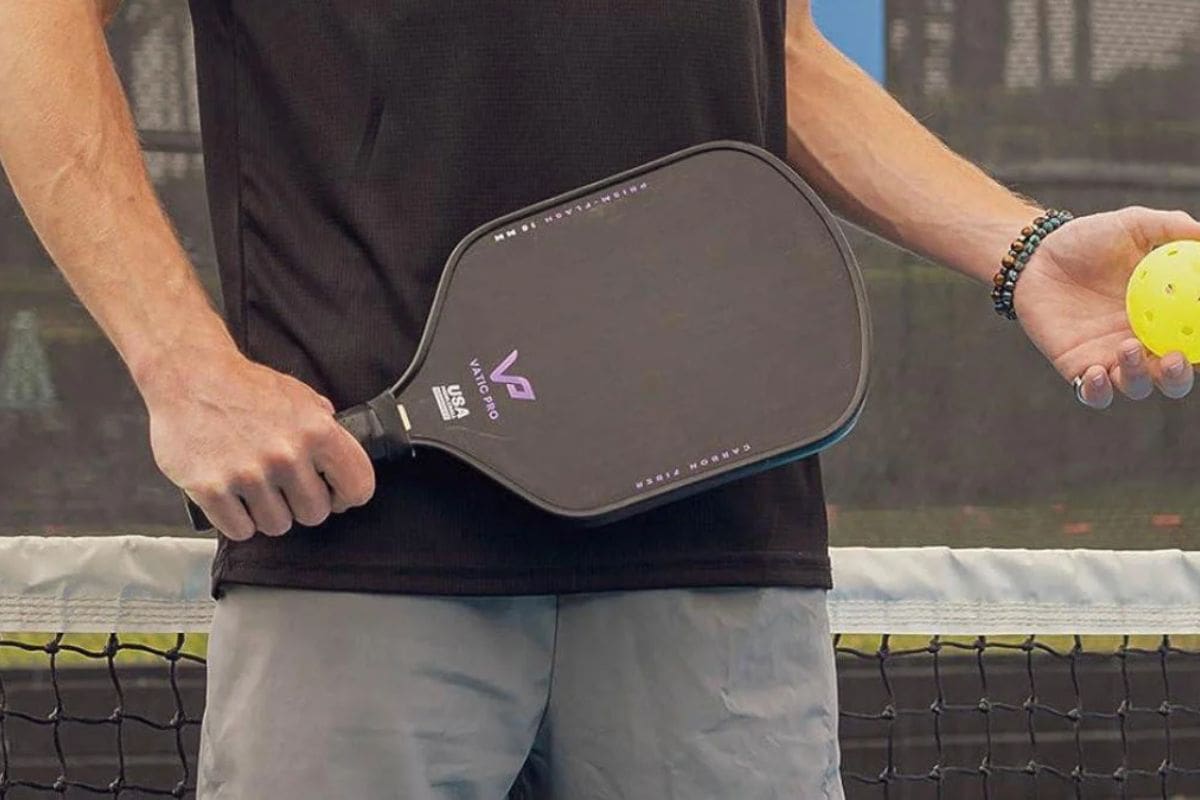Pickleball Paddle Grip Size: In pickleball, the grip size of a paddle is more than just a matter of comfort; it’s a critical factor that influences control, performance, and overall enjoyment of the game. A well-chosen grip size can enhance precision and reduce the risk of injury, while an ill-fitting grip can hinder performance and lead to discomfort.
Choosing the Right Grip Size
Choosing the correct grip size is crucial for achieving optimal control and comfort. There are two primary methods to determine the appropriate grip size for a pickleball paddle, each adapted from techniques used in tennis racquet sizing.
Method 1: Using a Known Grip Size
This method is straightforward but requires access to a tennis or pickleball racquet with a known grip size. The grip should not have been altered or built up in any way. Here’s how to use this method:
- Grip the Racquet: Hold the racquet with an Eastern Forehand Grip, positioning the palm of the hand against the same bevel as the string face of the racquet.
- Measure the Gap: Insert the index finger of your other hand into the gap between the ends of your fingers and the palm of your hand.
- Evaluate Fit:
- Too Small: If there isn’t enough room for your index finger, the grip is too small.
- Too Large: If there is excessive space, the grip is too big.
A grip that is either too large or too small can impact performance and cause discomfort or injuries such as tennis elbow.
Method 2: Measuring Your Hand
If you don’t have access to a racquet with a known grip size, you can measure your hand to determine the appropriate grip size:
- Prepare to Measure: Open your hitting hand with the palm facing you and fingers extended and closed together.
- Locate Creases: Your hand has two long creases running horizontally across the center. Measure the distance from the bottom crease to the top of your ring finger.
- Match the Measurement: This distance should correspond with the grip size. Grip sizes are categorized as follows:
- (0) – 4″
- (1) – 4 1/8″
- (2) – 4 1/4″
- (3) – 4 3/8″
- (4) – 4 1/2″
- (5) – 4 5/8″
If the measurement falls between two sizes, opting for the smaller size is generally recommended. A smaller grip size allows for more wrist action, which can improve maneuverability.
Adjusting the Grip Size
If the available grip sizes don’t perfectly fit, several methods can be used to adjust the grip to better suit individual preferences.
Heat Shrink Sleeves
Heat shrink sleeves are an effective method for increasing grip circumference. These sleeves, when applied and heated, add thickness without compressing, thereby maintaining the grip’s shape.
Leather Wraps
Replacing the stock grip with a leather wrap can significantly increase the thickness of the handle. Leather grips provide a firm, durable foundation. For additional thickness, a Hesacore grip and multiple overgrips can be layered on top of the leather wrap.
Hockey Tape
Hockey tape is a practical solution for building up the grip size. It adheres well and provides a textured surface that can enhance grip. However, players should be aware of potential adhesive residue when removing the tape.
Grip Stacking
Stacking multiple regular grips is another way to increase circumference. Applying a Wilson Cush aire grip over the stock grip, followed by layering an overgrip, can achieve the desired thickness without making the handle excessively bulky.
Custom Foam Inserts
For a more customized approach, replacing the foam slats under the factory grip with larger polyurethane slats can increase the circumference while preserving the handle’s shape. This method allows for thickness adjustment without significant bulk.
Weight Considerations
Adding thickness to the grip may alter the paddle’s balance and weight distribution. To counterbalance this, adjustments with lead tape on the paddle’s edges can help maintain the desired swing speed and overall balance.
The Importance of Grip Size
The grip size of a pickleball paddle is fundamental to performance. An improperly sized grip can lead to discomfort, reduced control, and increased risk of injury. Professional players often have their grips tailored to precise specifications to ensure they achieve the best possible performance.
A well-chosen grip size not only enhances comfort but also contributes to better control and power during play. Ensuring that the grip fits well and feels comfortable can lead to improved performance and a more enjoyable game.
Choosing and adjusting the grip size of a pickleball paddle is a crucial aspect of optimizing performance and comfort. By using the methods outlined above, players can select a grip size that fits well and make necessary adjustments to achieve the perfect feel. Proper care and attention to the grip can enhance play and reduce the risk of discomfort or injury. For players who are unsure about their grip size, experimenting with different options and considering the advice provided can help in making an informed decision.
News In Brief: Pickleball Paddle Grip Size
Selecting the right grip size for a pickleball paddle is essential for optimal control and comfort. Two main methods are used: 1) Testing with a known grip size, where the index finger is used to check the fit between fingers and palm, and 2) Measuring hand size, where the distance from the bottom crease to the top of the ring finger corresponds to grip sizes ranging from 4″ to 4 5/8″. If adjustments are needed, options include heat shrink sleeves, leather wraps, hockey tape, grip stacking, and custom foam inserts. Proper grip size improves performance and reduces injury risk, ensuring a more enjoyable game. Experimenting with these methods can help players find their ideal grip size.
ALSO READ: Greco DeRosa’s Pickleball Initiative: Responding Demands



